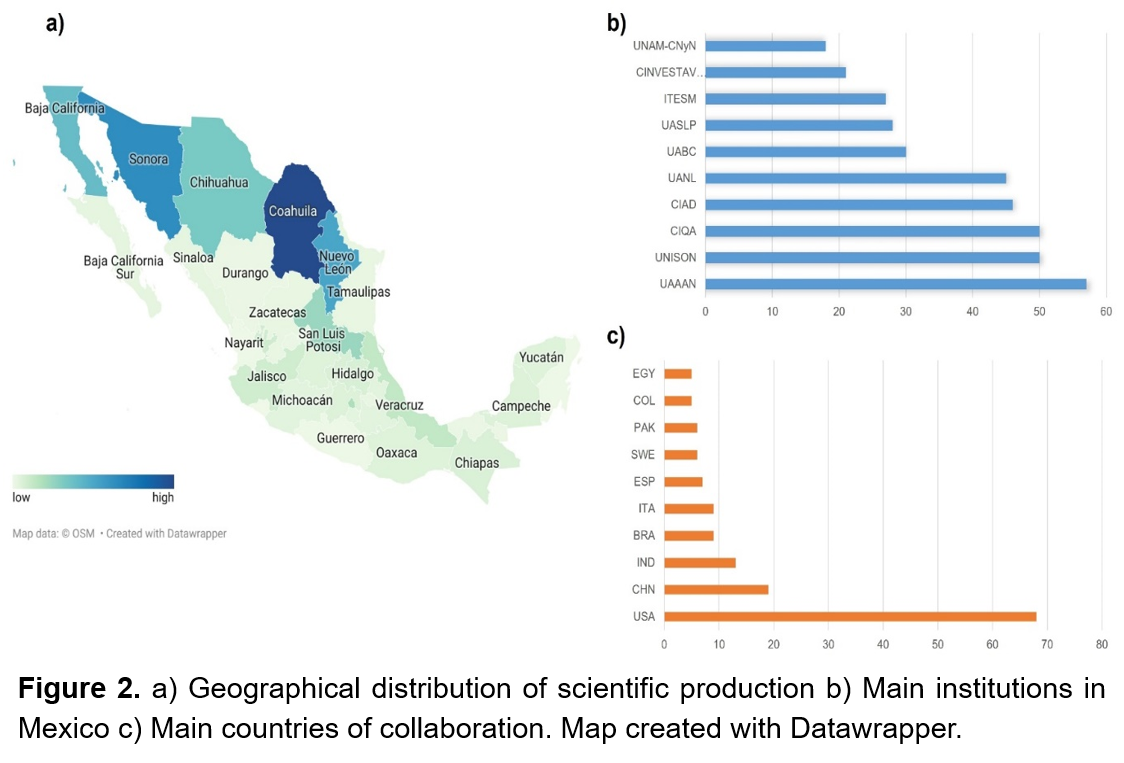Agronanotechnology in the arid zones of northern Mexico: Research, challenges, and new trends
DOI:
https://doi.org/10.56890/jpacd.v26i.534Keywords:
agronanotechnology, arid zones, food safety, nanoscienceAbstract
The agri-food systems in arid zones face challenges related to climate change, desertification, and soil contamination from agrochemicals' actions, among others. The agronanotechnology can generate alternatives to these problems, but it is necessary to monitor its development to have elements to apply policies that are oriented to the attention of these regions with a social perspective. This scientific paper aims to present provide a study of the situation of agronanotechnology in the arid zones of northern Mexico. Using bibliometric tools, the academic output in the field and map the public research agenda, focusing on providing the set of crops to which the local research is directed was analyzed. Furthermore, the literature associated with the risks to human health and the environment derived from some nanomaterials of agri-food interest and clarify the areas of opportunity and trends was reviewed. The results show a total of 224 research articles authored by 1029 scholars in 161 journals published from 2004 to 2022; that research on this topic reached its highest value in 2018 and then levels off at a value around of ~37%. The findings show a research agenda related to crops of economic interest for the export market like tequila, tomato, avocado, chili, watermelon. In México, agronanotechnology is an emerging field that deals with some crops of economic interest, but its development needs to be intertwined with the needs of rural producers.
Publication Facts
Reviewer profiles N/A
Author statements
Indexed in
- Academic society
- Journal of the Professional Association for Cactus Development
- Publisher
- Professional Association for Cactus Development




